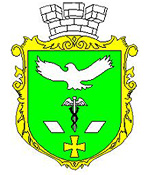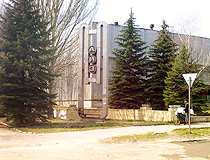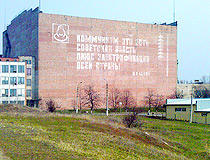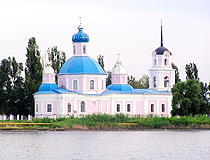History of Sloviansk
Foundation of Sloviansk
On the territory of today’s Sloviansk and in its suburbs, people already permanently lived about 6 thousand years ago, which is confirmed by the discovered remains of a Neolithic settlement. Also two settlements and several burial mounds dating back to the Bronze Age (4 thousand years ago) were found. The following archaeological sites belong to later periods: three Sarmatian burials (1,900-2,200 years ago), a catacomb burial ground of the Saltov culture (the 8th-10th centuries), as well as nomadic burials of the 9th-13th centuries.
From the end of the 16th century, on the Tor lakes (a group of saline lakes of karst origin, located on the northeastern outskirts of today’s Sloviansk), seasonal salt extraction took place. It was a dangerous occupation, since at that time this area was part of the so-called Wild Field, through which detachments of the Tatars of the Crimean Khanate regularly passed during their raids on neighboring countries.
According to legend, in 1645, at these lakes, near the Tatar crossing over the Kazenyi Torets River (then known as the Tor River), a wooden fort was built with a Cossack detachment of about twenty people. However, such small fortifications were built and subsequently destroyed here all the time, so this can hardly be considered the year of the founding of Sloviansk.
In 1663, another fort was built. In 1664, under its protection, the first state (in Tatar - “kazenyi”, hence the future name of the river) salt extraction manufacture of the Tsardom of Russia was built on the Tor River. The local population began to grow rapidly.
In 1676, near the Tor lakes, the town of Tor (future Sloviansk) was founded with a fortress in the form of a quadrangle with four-meter high walls. Its garrison numbered about 200 Cossacks. The residents of the town were engaged in salt production, fishing, hunting, and trade. Tor was one of the first towns in Donbass. In 1677, 245 families lived in it.
The fortress of Tor was located beyond the Belgorod fortified line built on the southern borders of the Russian kingdom in 1635-1654 and was often raided. The Crimean Tatars besieged it numerous times, burned and destroyed the salt pans, and sometimes the fortress itself, for example, in 1697.
More historical facts…
Sloviansk in the 18th century
In 1708, during the division of Russia into eight governorates, the town of Tor became part of the Azov Governorate, from 1718 - the Kyiv Governorate. In 1715, private salt production was prohibited and the sale of salt was declared a state monopoly. All salt factories were taken over by the Salt Board in St. Petersburg.
In the 1740s, the salt factory in Tor was reconstructed: furnaces were re-equipped, a special machine was constructed for supplying brine through wooden pipes from lakes. A number of auxiliary enterprises also arose: forges, carpentry and locksmith workshops, water and wind sawmills. Later, the town began to be called Solevarsk or Solevansk, reflecting in the name the main occupation of its residents (literally, “the town where salt is extracted from water”).
In 1773, the population of Tor was about 3.9 thousand people, of which one third were saltworkers. After the supply of cheaper Crimean salt to the domestic market of the Russian Empire became possible, the production of local salt decreased. In 1782, it was officially stopped as unprofitable.
Local residents mainly began to engage in agriculture, beekeeping and fishing, trade, leather crafts, shoemaking, weaving, blacksmithing. In 1783, the Tor fortress was excluded from the List of Fortification of the Russian Empire. In 1784, the name of the town was slightly changed again, probably because of the stoppage of salt extraction. Solevansk turned into Slovensk and modified later, in Russian pronunciation, into Slavyansk or Sloviansk in Ukrainian.
In 1793, at the request of the local merchant society, a town hall was established in Sloviansk. In 1797, it was an ordinary provincial town of the Izium district of the Sloboda-Ukrainian Governorate (in 1835, it was renamed Kharkiv Governorate).
Sloviansk in the 19th century
In 1812, a new All Saints Church was erected at the town cemetery. It was the first stone building in Sloviansk. In the 1820s, salt production resumed, as cheap fuel became available - coal from Lysychansk. By the middle of the 19th century there were 12 private salt factories in Sloviansk.
In 1827, military doctor A. Yakovlev was the first to use mud treatment and bathing in one of the local saline lakes to treat sick soldiers of the Chuhuiv garrison. In 1832, a branch of the Chuhuiv military hospital with 200 beds was opened near the lake. This year is considered the date of foundation of the Sloviansk balneological resort. In 1837, the population of Sloviansk was about 5.9 thousand people.
In 1852, a balneological clinic for the civilian population was opened. In 1869, the Sloviansk railway station was built on the Kursk-Kharkiv-Azov railway, which contributed to the further development of the town.
In 1887, Anton Chekhov wrote the following about Sloviansk: “This town is something like Nikolai Gogol’s Mirgorod; there is a hairdresser and a watchmaker, so we can expect that in 1,000 years there will be a telephone in Slavyansk. Posters of the menagerie are hung on the walls and fences, under the fences - excrement and burdock; pigs, cows and other domestic animals walk in the dusty and green streets. Houses look friendly and affectionate, in the manner of benevolent grandmothers; the pavements are soft, the streets are wide, the air smells of lilac and acacia; the singing of a nightingale comes from afar, the croaking of frogs, barking, harmonica, the scream of some woman…”
In the second half of the 19th century, the local resort, known as “Slavyansk Mineral Waters”, gained wide popularity. In 1891, the first wooden bridge was built across the Kazenyi Torets River.
In 1895, near the railway station of Sloviansk, a new church was built and consecrated in honor of Alexander Nevsky. It was erected by railway workers as a token of gratitude to God for the abolition of serfdom by Emperor Alexander II, whose heavenly patron was the holy noble Prince Alexander Nevsky.
According to the 1897 census, the population of Sloviansk was 15,792 people. At the end of the 19th century, there were 2 iron foundries, a mechanical plant, 23 salt works, 4 brick factories, 3 steam mills, porcelain and pasta factories, soda and chemical plants, and a terracotta tile factory in the town.
Sloviansk in the 20th century
In 1904, on the basis of the Tor salt deposits, the Bakhmut salt syndicate was created. The purpose of its creation was to coordinate the production of salt and its sale in the amount of about 40% of the existing market. In 1907, at the international exhibition in Belgium, held in the city of Spa, the healing mud of the Sloviansk resort was awarded the highest award - the Big Gold Medal.
In 1915, the population of Sloviansk was 28,925 people. From 1917 to 1919, the period of revolutions and the Civil War on the territory of the former Russian Empire, the power in Sloviansk changed several times. In 1920, it became a town of the Ukrainian Soviet Socialist Republic.
In November 1920, factories were nationalized by decree of the Council of People’s Commissars of the Ukrainian SSR. In 1922, two sanatoriums and expropriated private dachas were merged into a single resort facility with 750 beds. In 1934, the Sloviansk resort received the status of an all-Union resort.
In the 1930s, during industrialization, the active development of industry began. Pyotr Krivonos, the locomotive driver of the Sloviansk station, gained all-Union fame, after developing a way to double the technical speed of the movement of loaded trains. During the same period, all Orthodox churches in the town were closed. From 1931 to 1939, the population of Sloviansk increased from 28,754 to 77,842 people.
Before the Second World War, more than 20 enterprises of union and republican significance, 8 sanatoriums worked in the city. There were 4 hospitals, a maternity hospital, 5 polyclinics, 16 preschool institutions, 23 general education schools, 6 secondary specialized educational institutions (pedagogical school, chemical and railway technical schools, feldsher-obstetric school, and two schools of nurses), 9 movie theaters, 12 clubs, 23 libraries.
On October 25, 1941, Sloviansk was occupied by the German army. On February 17, 1943, the Soviet troops managed to liberate the city, though only for 7 days. On February 25, 1943, after a counteroffensive, Sloviansk was again occupied by the Germans. On September 6, 1943, the city was again liberated from German troops. As a result of occupation and fighting, all factories, medical institutions of the Sloviansk resort, most of the social and cultural facilities, as well as more than 1,000 residential buildings in Slavyansk were destroyed. In 1944, the St. Alexander Nevsky Church was reopened.
In 1974, the Sloviansk Museum of Local Lore was opened. In 1983, there were two children’s sanatoriums (125 beds), and professional sanatoriums “Donbass” (608 beds) and “Slavyansky” (320 beds) in the city. From 1961 to 1989, the population of Sloviansk increased from about 86,000 to 135,000 people. The city became a major industrial center of the Donetsk industrial region.
Sloviansk in independent Ukraine
In connection with the collapse of the USSR, which disrupted economic ties and the transition to a market economy, a number of industrial enterprises in Sloviansk went bankrupt and ceased to exist. From 1991 to 2021, the population of Sloviansk decreased by about 20%. In 2011, Sloviansk became a resort of national importance.
On April 12, 2014, several days after the proclamation of the so-called Donetsk People’s Republic (DPR), in Sloviansk, supporters of the DPR occupied administrative buildings, the buildings of the Security Service of Ukraine and the police department. Following this, a group of armed activists calling themselves the People’s Militia of Donbass and supporters of the DPR set up several checkpoints and began building barricades. Their total number was initially small, a few dozen people.
On April 13, 2014, the Ministry of Internal Affairs of Ukraine announced the start of an anti-terrorist operation in Sloviansk. Several units of the Ukrainian army were sent to the city. Around Sloviansk, the fighting began, which lasted more than two months. The Ukrainian army could not regain control over the city by a quick assault because the number of defenders increased significantly, they also had captured armored vehicles and even air defense. That is why it was decided to take Sloviansk into a complete encirclement.
On the night of July 5, 2014, most of the separatists occupying the city, numbering about 1,000-1,800 people with a column of armored vehicles, fought their way from the encircled Sloviansk to neighboring Kramatorsk, from where they later retreated to Horlivka and Donetsk. In total, several hundred people died during the battles for Sloviansk.
For the separatists, the defense of Sloviansk became one of the symbols of the so-called “Russian spring”. Since the main efforts of the Ukrainian army were focused on regaining control of Sloviansk, the separatists were able to buy time to organize new fortified centers of resistance.
In 2023, during the Russian invasion of Ukraine, the possible battle for Sloviansk and nearby Kramatorsk will probably become the key battle of this war.
Pictures of Sloviansk
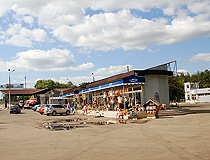
Street market in Sloviansk
Author: Valeriy Dudush
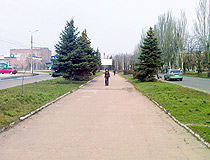
Walk along the street in Sloviansk
Author: Denis Nechepurenko
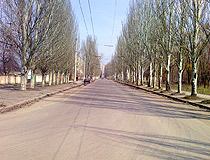
Traffic-free street in Sloviansk
Author: Denis Nechepurenko
Sloviansk - Features
The coat of arms of Sloviansk is described as follows: in the green field of the shield there is a golden caduceus, above the caduceus there is a silver falcon with outstretched wings, below is a golden Cossack cross, on the sides there are two silver rhombuses.
The falcon symbolizes the song “I marvel at the sky and wonder, why I am not a falcon, why I don’t fly” composed by the poet Mikhail Petrenko (1817-1862), who was born in Sloviansk. The rhombuses and the caduceus symbolize salt extraction and trade. The Cossack cross symbolizes the Cossacks who defended Sloviansk at the time of its founding. The green field of the shield symbolizes nature and the health resort of Sloviansk.
On the territory of Sloviansk there are unique salt lakes of karst origin. They are separated from each other by sand banks about 150-200 m wide. The lakes have healing properties and are the basis of the city’s sanatorium and resort industry. Since 1975, they have been under protection as hydrological natural monuments of national importance. The water temperature in summer reaches plus 22-24 degrees Celsius.
During the year, temperatures in Sloviansk usually range from -8 to +28 degrees Celsius and rarely fall below -18 or rise above +34 degrees Celsius. The warm season lasts almost four months, from late May to early September. This is the best time to visit Sloviansk. The hottest month of the year is July, with an average high of +28 and a low of +17 degrees Celsius. The cold season also lasts about 4 months, from mid-November to mid-March. The coldest month of the year in Sloviansk is January, with average temperature maximum -7 and minimum -2 degrees Celsius.
The main industry of Sloviansk is mechanical engineering producing concrete mixing equipment, spare parts for the mining and metallurgical complex, coke equipment, etc. Ceramic production is traditional for Sloviansk. Hundreds of private entrepreneurs are engaged in this business. The only producer of high-quality salt “Extra” (95.4% NaCl) in Ukraine is also located here. The Sloviansk balneological resort is an important part of the city’s economy too.
Sloviansk is the center of the Yuzivska shale gas field with a potential production volume of about 10 billion cubic meters per year. For comparison, the consumption of natural gas in Ukraine amounted to 26.8 billion cubic meters in 2021.
This city is an important highway and rail junction. There are several railway stations in Sloviansk. The Kharkiv-Rostov M03 E40 highway passes near it, and the national highway Sloviansk-Mariupol H20 starts from it. The main public transport in Sloviansk is mini-buses, there are also several trolleybuses.
According to the all-Ukrainian census of 2001, 42.61% of the residents of Sloviansk indicated Ukrainian as their native language, 55.68% - Russian. According to the same census, 24.1% of the population of Donetsk Oblast indicated Ukrainian as their native language (6.5% less than according to the 1989 census); 74.9% of the population indicated Russian as their native language (7.2% more than in 1989).
Main Attractions of Sloviansk
Sloviansk Balneological Resort - a regional landscape park known for its unique salt lakes, one of the oldest balneo-mud resorts in Ukraine, which has been operating for over 190 years. The water and mud bath and 3 sanatoriums located here specialize in the treatment of diseases of the musculoskeletal system, the nervous system, the circulatory system, gynecological diseases, gastritis, and general healing of the body.
Natural healing factors: mixed forest climate, sulfide silt mud, brine, a whole range of mineral waters, including unique iron-containing ones for the treatment of anemia. Treatment includes: therapeutic mud, various types of baths and showers, all types of physiotherapy, massage, inhalations, psychotherapy, acupuncture, speleotherapy, dietary nutrition. The resort area is located about 3 km northeast of the center of Sloviansk. The Church of the Resurrection of Christ, the oldest church in Sloviansk built in the 19th century, stands on the shore of one of the lakes (Sil’zavods’ka Street, 17).
National Natural Park “Sviati Hory” (“Holy Mountains”) - a national natural park located in the northern part of Donetsk Oblast, northeast of Sloviansk. In 2008, the chalk mountains of this park were included in the Top-100 of the all-Ukrainian competition “Seven Natural Wonders of Ukraine”.
On the territory of the park there are 129 archeological objects (from the Paleolithic to the Middle Ages) and 73 historical monuments. The most picturesque monument is the Holy Dormition Sviatohirsk Lavra (also known as Sviatohirsk Cave Monastery), founded in the 13th-16th centuries and located on the rocky right bank of the Siverskyi Donets River, about 20 km north of Sloviansk.
Sloviansk Chalk Mountains. The Donetsk region has long been famous for the richness of its mineral resources. The exploration of new deposits never stops here. This is how the elements of the human-made relief, characteristic of this region, appear - quarries and slag heaps - introducing a certain post-apocalyptic vibe into the monotonous steppe landscape.
One of such places can be found in the northern part of Donetsk Oblast, in the urban village of Raihorodok (literally meaning “paradise town”), about 10 km northeast of Sloviansk. Here you won’t see typical brown slag heaps made of spent coal rock. You will see a pair of white peaks, clearly visible against the blue sky. Since the end of the 19th - beginning of the 20th centuries, near Raihorodok, a large deposit of high-purity chalk has been developed in an open way, forming around it snow-white dumps and an almost unearthly landscape.
Museum of Folk Architecture, Life and Children’s Art in Prelesne. The open-air museum complex of the village of Prelesne (literally meaning “charming”), located about 20 km west of Sloviansk, is a rural farmstead of the 19th century: a windmill, a house, a barn, a forge, a well, beehives.
Today, this museum has more than one thousand exhibits of folk art and life of Sloboda Ukraine of the 19th - early 20th centuries (furniture, clothing, embroidery). In the archaeological department of the museum, you can see petrified trees, bones and teeth of mammoths, shells, etc. The pride of the museum, which makes it even more unique, is the exposition of children’s art.
Also there is another attraction in this village - the Bantysh Estate, consisting of a two-story landowner’s manor, built in 1837, and an outbuilding, where the family teacher, writer Grigory Danilevsky once lived. The park of the estate is a monument of landscape architecture of the 19th century.
Sloviansk Ceramic Market. At the exit from the building of the railway station of Sloviansk, to the left of Pryvokzal’na Square, there is a ceramic market. Here you will immediately understand why Sloviansk is called the city of ceramics. This market is famous for the widest variety of ceramic souvenirs made in local private workshops. The Alexander Nevsky Cathedral (1895), a picturesque Orthodox church built of red brick, is also located nearby. Pryvokzal’na Square, 1.
Sloviansk Museum of Local Lore. This museum occupies an old merchant’s mansion built at the end of the 19th century. The following collections are the most interesting: archaeological, numismatic, ceramics, everyday life and ethnography. Thirteen exhibition halls give a complete picture of the times of settlement of the region, the development of trades and crafts, industry, life and cultural heritage in relation to the socio-economic and cultural development of the city. Bankivs’ka Street, 31.



